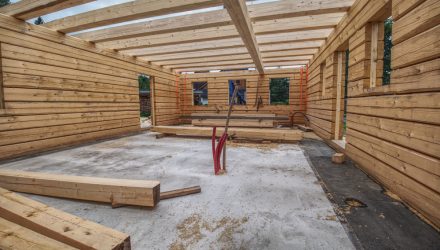It’s already a seller’s market due to low inventory and relatively benign interest rates. Now, rising lumber costs could bring housing prices even higher, to the benefit of assets like the Invesco Dynamic Building & Construction ETF (PKB).
“The frenzied climb in lumber prices is generating superlative profits for sawmill owners,” a Wall Street Journal article said. “Home buyers, renters and do-it-yourselfers are footing the bill.”
Furthermore, it’s a trend that analysts don’t foresee waning anytime soon.
“Absent a significant increase in mortgage rates or a Covid resurgence, it is hard to imagine what could cause lumber demand to drop and prices to moderate in the foreseeable future,” said Eric Cremers, chief executive of PotlatchDeltic Corp., which owns timberland and mills in Idaho, Arkansas, Michigan, and Minnesota.
Thus far, it’s been a seller’s market as home supply cannot keep up with demand.
As for PKB, it seeks to track the investment results of the Dynamic Building & Construction IntellidexSM Index. The fund generally will invest at least 90% of its total assets in the securities that comprise the underlying intellidex.
The underlying intellidex is composed of common stocks of U.S. building and construction companies. These companies are engaged primarily in providing construction and related engineering services for building and remodeling residential properties, commercial or industrial buildings, etc.
The fund is up 110% the past year and still climbing. So far in 2021, it’s up almost 30%.
An Explosion in Wood Prices
Social distancing regulations amid the pandemic has made homes the live-work dwellings for many individuals. As mentioned, more homeowners are renovating their current homes, which plays into also profits for companies like Home Depot.
Home Depot is one of the top holdings of PKB at about 6% of the fund’s assets. The biggest winners, however, have been sawmill companies.
“These companies have emerged as the biggest beneficiaries of the wood boom.,” the WSJ article said further. “They are feasting on a glut of cheap pine trees in the U.S. South while their finished products like lumber and plywood are flying off hardware-store shelves and being bid up by home builders.”
“Lumber futures delivery later this month ended Monday at $1,575.60 per thousand board feet, a record and more than four times the typical price this time of year,” the article added. “Futures rose by the daily maximum allowed by the Chicago Mercantile Exchange during nine of April’s 21 trading sessions.”
For more news and information, visit the Innovative ETFs Channel.









